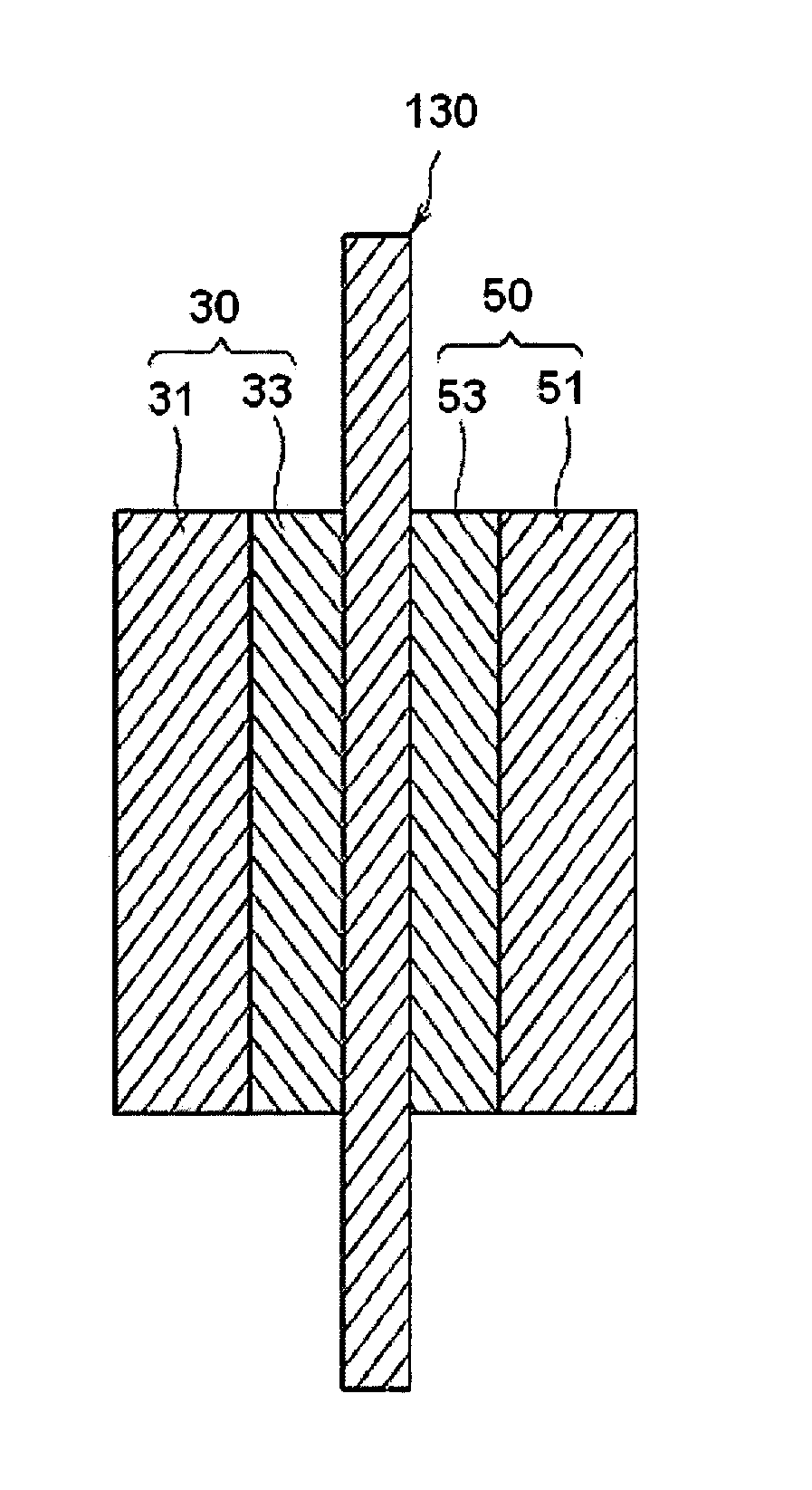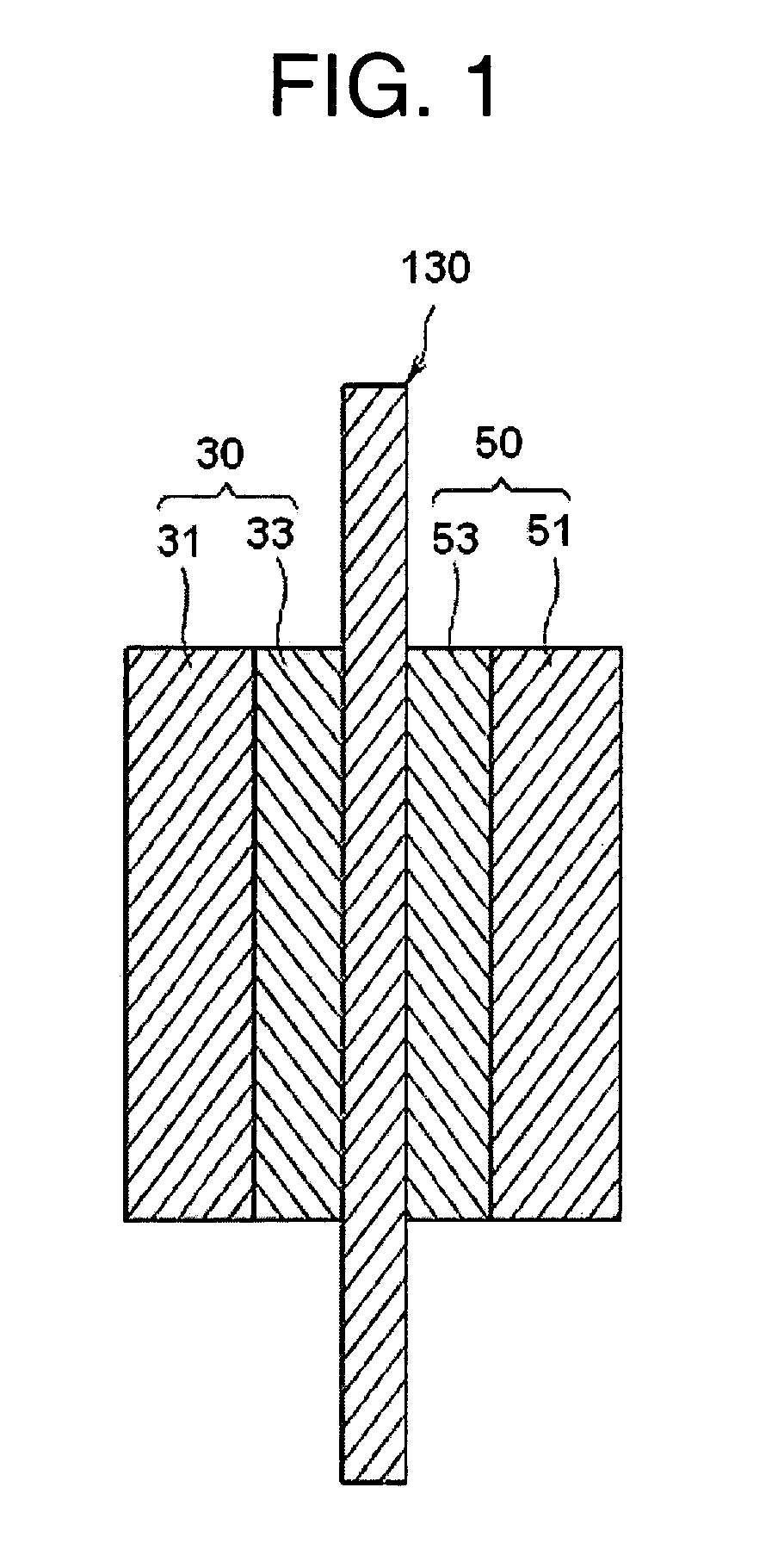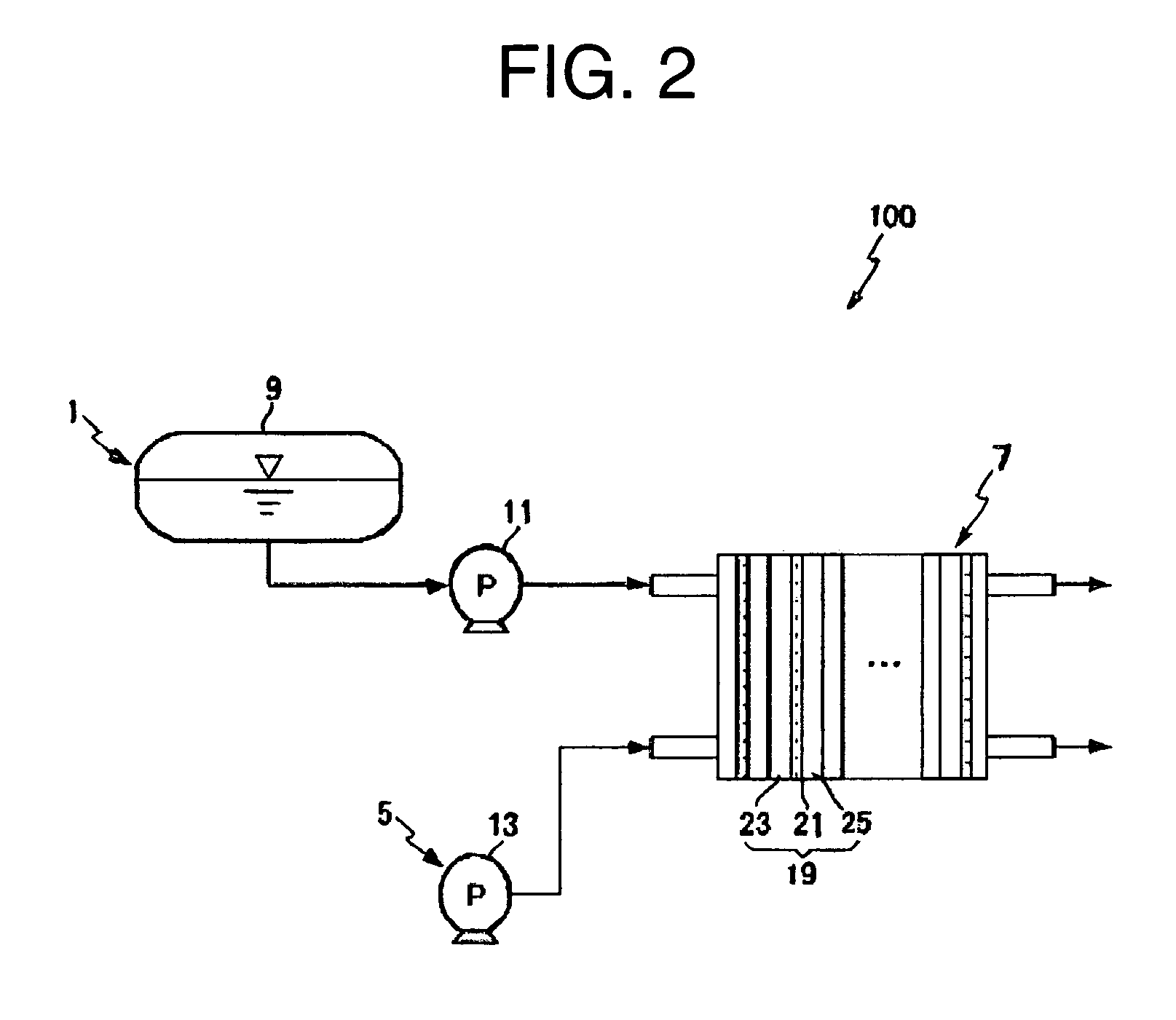Ion-conducting crosslinked copolymer and fuel cell comprising the same
a crosslinked copolymer and fuel cell technology, applied in the direction of conductive materials, final product manufacturing, chemical/physical processes, etc., can solve the problems of serious deterioration of the performance of the fuel cell, reduce the crossover of methanol, improve the dimension stability of the polymer electrolyte membrane, and reduce the effect of ionic conductivity
- Summary
- Abstract
- Description
- Claims
- Application Information
AI Technical Summary
Benefits of technology
Problems solved by technology
Method used
Image
Examples
example 1
[0056]4.337 g (19.00 mmol) of a compound represented by Formula 5, 2.980 g (13.66 mmol) of a compound represented by Formula 6, 2.884 g (6.83 mmol) of a compound represented by Formula 7, 0.292 g (1.00 mmol) of a compound represented by Formula 8, and 2.832 g of anhydrous K2CO3 were charged into a 250 ml three-necked flask equipped with Dean-Stark trap, and solvents including 50 ml of dimethyl sulfoxide (DMSO) and 20 ml of toluene were mixed with them.
[0057]
[0058]The mixture was refluxed at 140° C. for 4 hours under a nitrogen atmosphere to remove water, and then toluene was removed from the mixture. After increasing the reaction temperature to 180° C., the reactants were polymerized at a constant temperature for 16 hours. The resultant product was then cooled to room temperature and the reaction solution was precipitated into methanol. The precipitated copolymer was washed with hot distilled water three times to remove inorganic materials from the product. The resultant copolymer w...
example 2
[0061]A conducting copolymer was prepared in the same manner as in Example 1, except that 4.378 g (19.18 mmol) of a compound represented by Formula 5, 3.098 g (14.20 mmol) of a compound represented by Formula 6, 2.998 g (7.10 mmol) of a compound represented by Formula 7, 0.622 g (2.13 mmol) of a compound represented by Formula 8, 2.95 g of anhydrous K2CO3, 55 ml of DMSO, and 30 ml of toluene were used (Tg: 173.5° C., Td: 195.4° C.). A polymer electrolyte membrane was obtained using the conducting copolymer.
example 3
[0062]A conducting copolymer was prepared in the same manner as in Example 1, except that 6.506 g (28.50 mmol) of a compound represented by Formula 5, 4.026 g (18.45 mmol) of a compound represented by Formula 6, 5.194 g (12.30 mmol) of a compound represented by Formula 7, 0.438 g (1.5 mmol) of a compound represented by Formula 8, 4.30 g of hydrous K2CO3, 80 ml of DMSO, and 40 ml of toluene were used (Tg: 167.4° C., Td: 184.0° C.). A polymer electrolyte membrane was then formed using the conducting copolymer.
PUM
| Property | Measurement | Unit |
|---|---|---|
| temperature | aaaaa | aaaaa |
| Tg | aaaaa | aaaaa |
| Tg | aaaaa | aaaaa |
Abstract
Description
Claims
Application Information
 Login to View More
Login to View More - R&D
- Intellectual Property
- Life Sciences
- Materials
- Tech Scout
- Unparalleled Data Quality
- Higher Quality Content
- 60% Fewer Hallucinations
Browse by: Latest US Patents, China's latest patents, Technical Efficacy Thesaurus, Application Domain, Technology Topic, Popular Technical Reports.
© 2025 PatSnap. All rights reserved.Legal|Privacy policy|Modern Slavery Act Transparency Statement|Sitemap|About US| Contact US: help@patsnap.com



